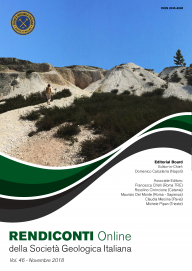
Mappatura geostatistica automatizzata di parametri meteo-climatici per il bilancio idrico
Giuseppe Raspa (a), Carlo Gazzetti (b), Luis Gomez (c) & Paolo Sarandrea (b)
(a) Sapienza Università di Roma, Dipartimento Ingegneria Chimica, Materiali Ambiente.
(b) Tecnostudi Ambiente S.r.l. - Piazza Manfredo Fanti, 30, 00185, Roma.
(c) CLIM-IT - Climate Monitoring for Risk Reduction - Italy - www.clim-it.org - info@clim-it.org.
Corresponding author e-mail: carlo.gazzetti@tecnostudiambiente.it
Volume: 46/2018
Pages: 2-8
Abstract
Geostatistical mapping of a continuous variable consists in its spatial reconstruction in a given domain using Kriging techniques. Mapping is based on a limited number of direct observations, using also one or more densely sampled indirect information. In addition, the geostatistical approach provides the corresponding variance/standard deviation estimation map.
In the framework of Groundwater Master Plans conducted in Central Italy for the estimation of the distributed water balance of volcanic, alluvial and carbonate aquifers, an automated estimation procedure based on intrinsic Kriging with external drift was developed.
The regional planning of water resources should be based on a distributed water balance approach and on the estimation of key hydro-meteorological maps at high spatial resolution, among others: daily precipitation, daily maximum, minimum and average temperature. As this approach requires the estimation of a huge amount of data over a period of 20 years at least, it is mandatory the use of an automatic methodology for the estimation of the hydrometeorological fields.
The developed procedure generates water balance maps at high spatial resolution. The maps are highly reliable even in case of temporal failure of some monitoring stations and the presence of data gaps in the time series. The automatic geostatistical mapping is a powerful tool that can be used in several applications that require the estimation of the hydro-meteorological fields in realtime (e.g, early warning and flood forecasting systems, or in the field of the assessment of climate change at river basin scale, where the use of an ensemble of climatic scenarios and related projections is necessary).
Keywords
Get Full Text